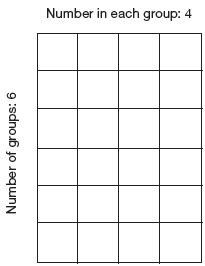Low achievers in mathematics often struggle to identify structures and patterns. Making these structures explicit can help shift their conceptual understanding. Diagrams are a useful way for students to analyse the structure of problems. However, check that the students understand the relationship between the diagram and the problem.
Additive and multiplicative problems are structurally very different, which is reflected in the tools that can be used to solve them.
Additive problems are one-dimensional, which makes a number line a useful tool. Students can move forwards and backwards along a sequential line of numbers to find an answer. For example:
Kayla has 36 stickers. Her sister gives her another 23 stickers. How many stickers does she have now?
Simple multiplicative problems can be represented on a number line if the student uses skip-counting. This is, however, essentially a counting strategy. Some students skip-count without understanding the concept of groups of equal size.
Multiplicative problems always have at least two dimensions: the number in each group and the number of groups. It has been suggested that “the most flexible and robust interpretation of multiplication is based on a rectangle” (Davis, 2008, page 88). This makes an array a perfect model with which to explore multiplication.
Work with students to identify these two dimensions across a variety of problems. Once students can identify the two dimensions, have them display them in an array. For example:
There are 6 tables in the room. Each table has 4 chairs around it. How many chairs are there altogether?
The NDP Book 6: Teaching Multiplication and Division, page 5, provides examples of different types of multiplicative problems. Consider how models could be used to represent each problem in the table.

